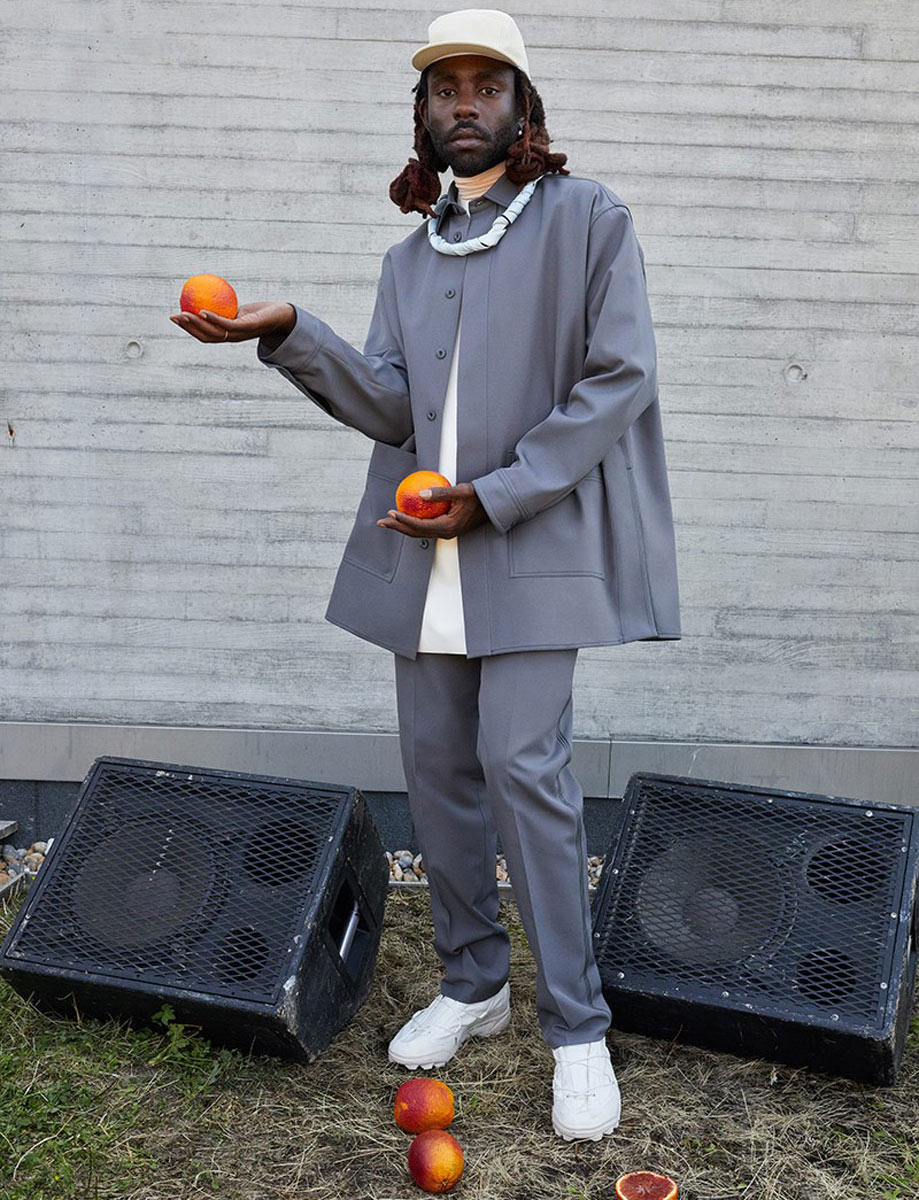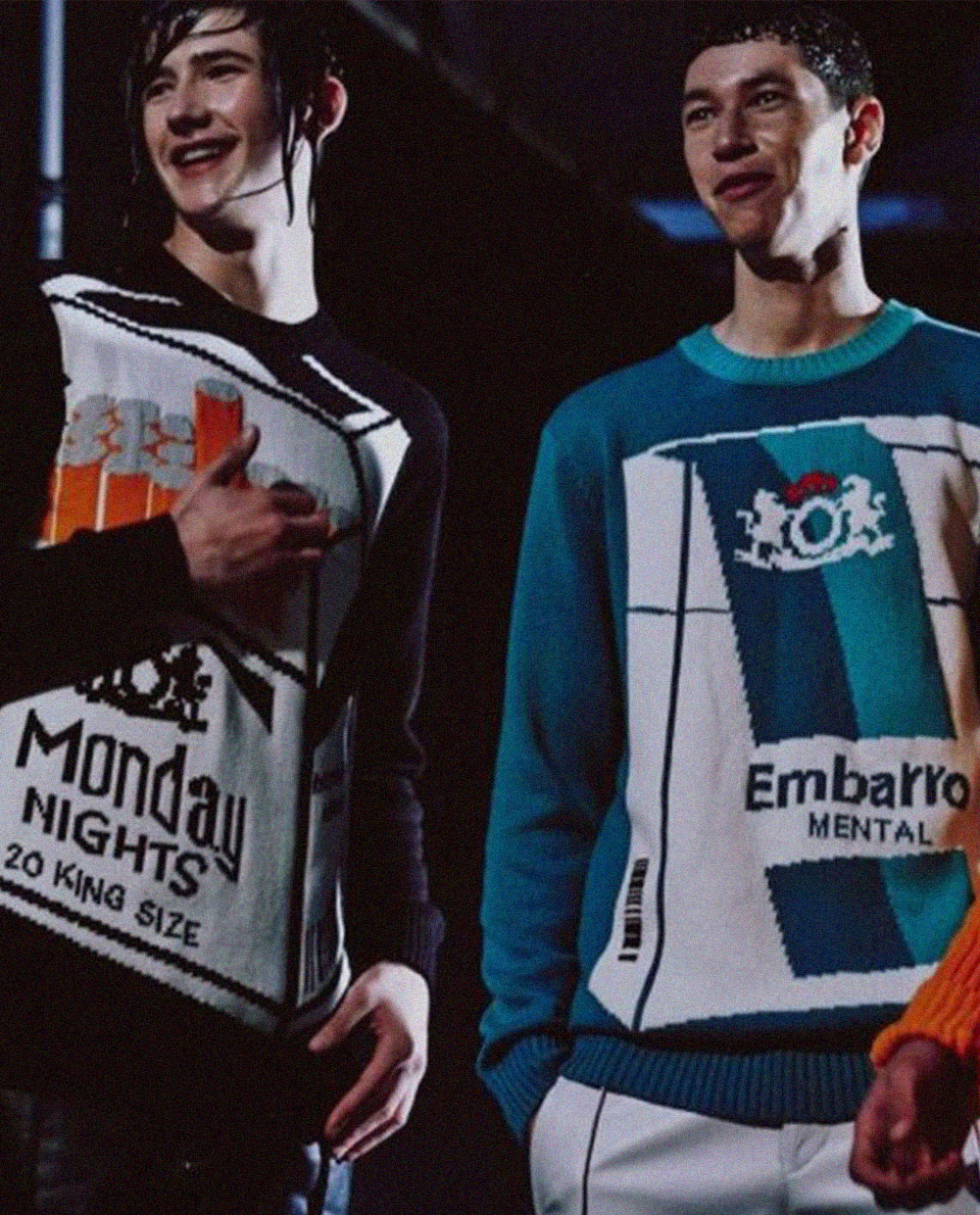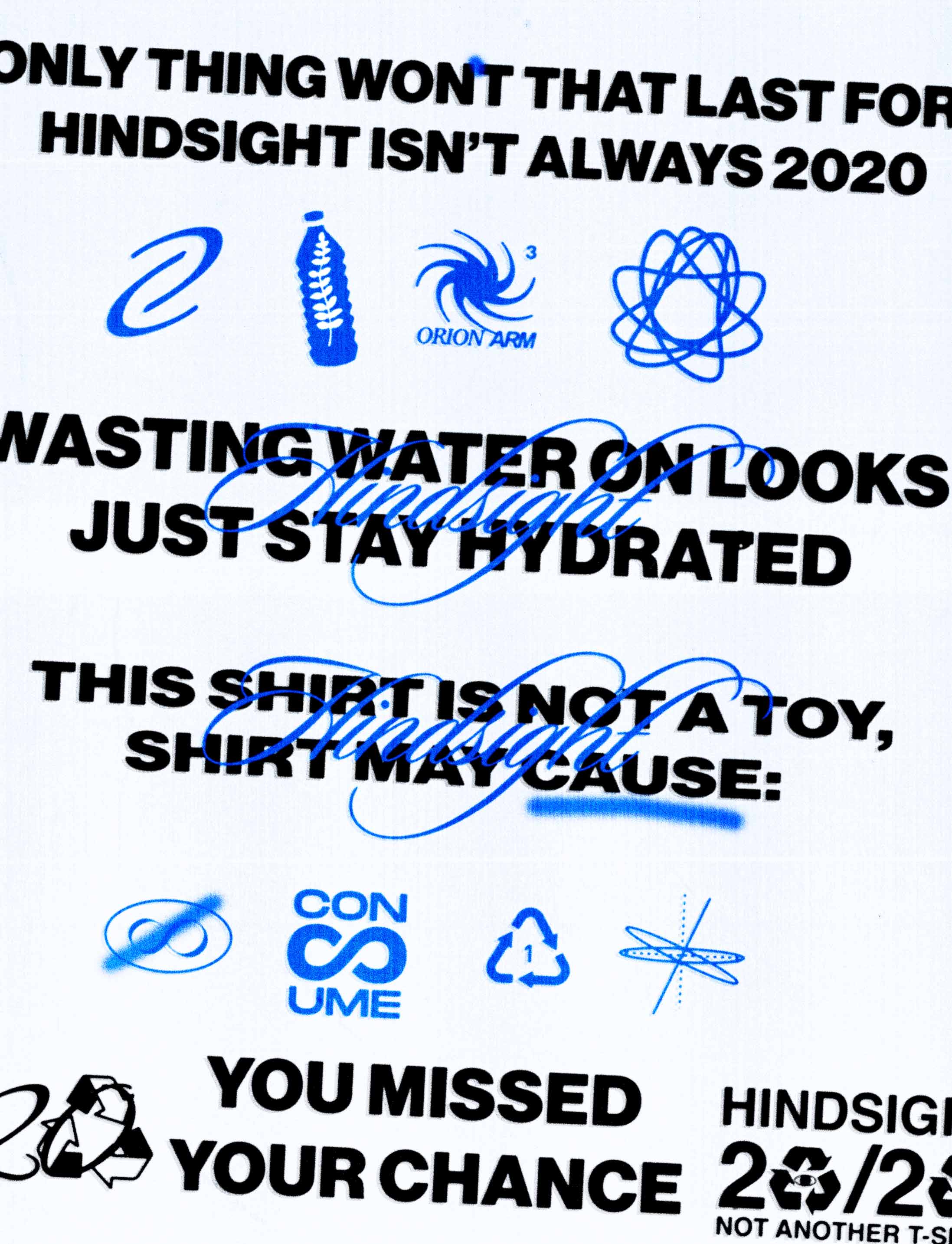It’s winter in East London, and a crowd dressed in heavy outerwear and armed with iPhones has gathered inside a sterile studio space. The walls are pure white and the slate-grey floor is dotted with steel barricades. As the last slivers of morning sun creep in through the windows, the atmosphere inside the room grows leaden with distracted whispers and collective bemusement. The crowd turns slowly, to face a large, hairy monster who seems to be holding a smaller, fluffier version of itself. This creature strides down a runway as a cast of figures follow, some clad in layers of clear PVC, others adorned in cosmic symbols and translucent goo. More follow, wearing lab coats and hideous prosthetic fangs. This transformation of an unassuming events space into a sartorial twilight zone is the work of Xander Zhou, a menswear designer whose AW19 collection was a theatrical look at a surreal and disconcerting, intergalactic future.

Zhou’s show wasn’t the only AW19 London Fashion Week Men’s show that explored themes of apocalyptic futures and humanity’s destruction. Liam Hodges’ collection reflected a similar, yet less clinical and more nightmarishly dystopian, narrative – think alternate realities ruined by toxic waste and 3D-printing gone awry. For other collection previews, the show notes were littered with buzzwords like evolution, bionic, technology and sustainability.
Fashion is now nervously trying to imagine the fearful future it’s created
Of course, this wasn’t the first time fashion and art has experimented with prospective futures. Fashion and wider culture has long had a relationship with the future. Pierre Cardin and André Courrèges were dabbling with Jetsons-inspired design as early as the ‘50s and ‘60s; Hussein Chalayan’s ‘remote control dress’ in the early noughties was pivotal in displaying the crossover between costume and the machine. In film, Luc Besson’s 1997 film The Fifth Element gave us the future as envisioned by John Paul Gaultier, and we’ve grown up with cultural milestones like the cyberpunk lure of Blade Runner, and the vector-crazy world of TRON, which have all massively influenced how we dress our distant realities. In music, Bjork has long explored the hybridic harmony between nature and technology, through 3D-printed death masks and glow-in-the-dark headdresses. Record label PC Music have been reimagining hyperkinetic aesthetics and sound since the early 2010s, painting a picture of a highly capitalist future. And lest we forget the almighty Health Goth, which entered our lives in 2014 as a self-proclaimed “anti-nostalgic dystopian present,” and had us all wishing we were donning reflective tracksuits and Air Max 97’s as a testament to forward-thinking.

Our collective vision of the future through art and culture has long fluctuated, and this year it seemed to take on a new character: it’s started to look like an industry that was notorious for its disregard of, and impact on, the environment, is now nervously trying to imagine the fearful future it’s created, albeit through impeccably tailored, social-media worthy costume. There’s an undercurrent of desperation in the collections being debuted now, as we edge closer towards the point of no return in environmental degradation.
Some designers, like Marine Serre, are taking matters seriously. Referring to her own collections as FutureWear, Serre is overturning the fashion industry’s knack for over-production and consumption through her upcycled pieces. Serre’s AW19 campaign, Radiation, is a bold and daunting epitomization of future tropes. Featuring work by digital artist Rick Farin, the campaign presents clothing that looks and feels supremely hypermodern: skin-tight silhouettes, air-masks and functional detailing all developed to survive uncertain, post-apocalyptic realities. It’s a combination of everything we love and fear about the future.
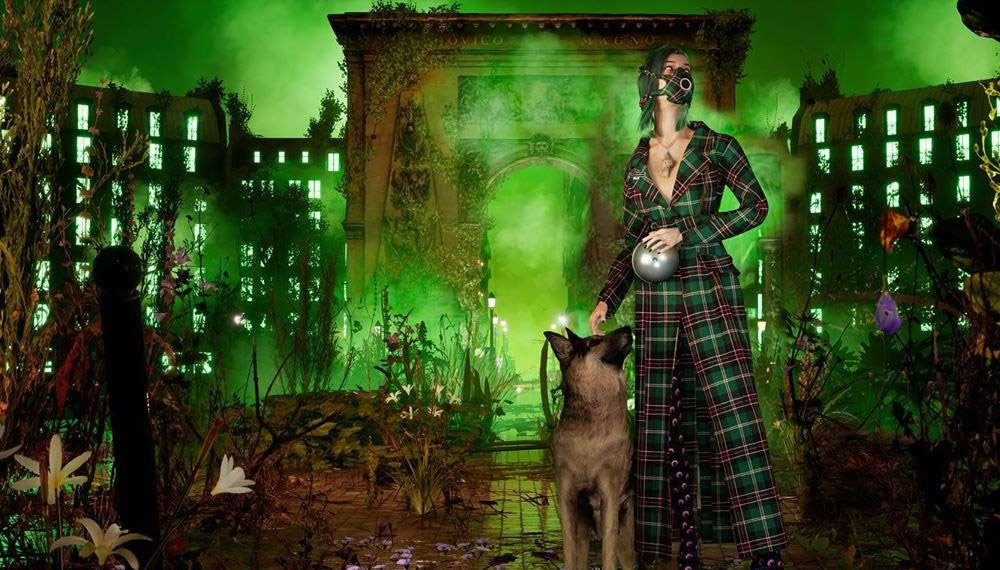
At Marinne Serre, a combination of everything we love and fear about the future
Fashion’s current attempts to grapple with the future go even further than the physical realm, too. The paradigm seems to be shifting to a point where we’re using modern technology to create our own virtual designs at grassroots, with minimal impact on the environment. We’re wearing AR face filters and creating otherworldly, androidian makeup looks; some of us are autonomously collating our own perceptions of the future through online neo-archives like @2055aesthetics, @thisiscala, and @magicfabricblog. There’s a distinct aesthetic that runs through these platforms that is absurdly enticing and strikingly resonant: man merging with machine, the material bleeding into AR. As the technology for these applications continues to develop, our boundaries for reimagining future realities will grow with it.
Taking things a step further are brands like Carlings, who are creating, wearing and viewing clothes through digital collections. Launched last winter, Carling’s range included items priced between €10-€30 that could be digitally manipulated on to a photograph of the customer. Other brands like The Fabricant are working towards producing wholly digitised clothes and completely virtual fashion editorials. Their motto reads: “always digital, never physical.” These are clear responses to throwaway fashion and the influencer-heavy saturation of our social media feeds, as both brand initiatives promise zero impact on the environment. Reclaiming digital technologies to produce virtual clothing also democratises the process of creating and consuming clothes, taking some of the power from the industry giants and returning it back to us. And as this technology develops even further, the possibilities for experimentation in design, and boundless self-expression will continue to expand with it.
For some artists, the exploration of intergalactic imagery, cosmic graphics and motifs is a form of defiance in itself. Designer Florian Tripoteau includes these themes in his work to experiment with a rhetoric of rebellion. Citing La Conquête de l’Espace (The Conquest of Space) as one of his major cultural influences, Tripoteau postulates that “visual pollution and the conquest of public space by advertising devices is already happening on Earth. For me, over-using space-related imagery in my designs is a way for me to question it all and say I am aware of this conquest.” Like Carlings and The Fabricant, Tripoteau is sceptical of the dominance of powerful, third-party companies over our domestic spaces, whether that be through the clothes we wear, or through everyday offline and online media saturation. Similarly to Marine Serre, Tripoteau’s intrigue with the future is rooted in the sociopolitical. For designers like these, there is an awareness that they are creating products for consumption, yet they are questioning the very fundamentals and processes of unconscious consumerism. When the medium becomes the message, this self-awareness is integral to the process of creating futurist fashion.
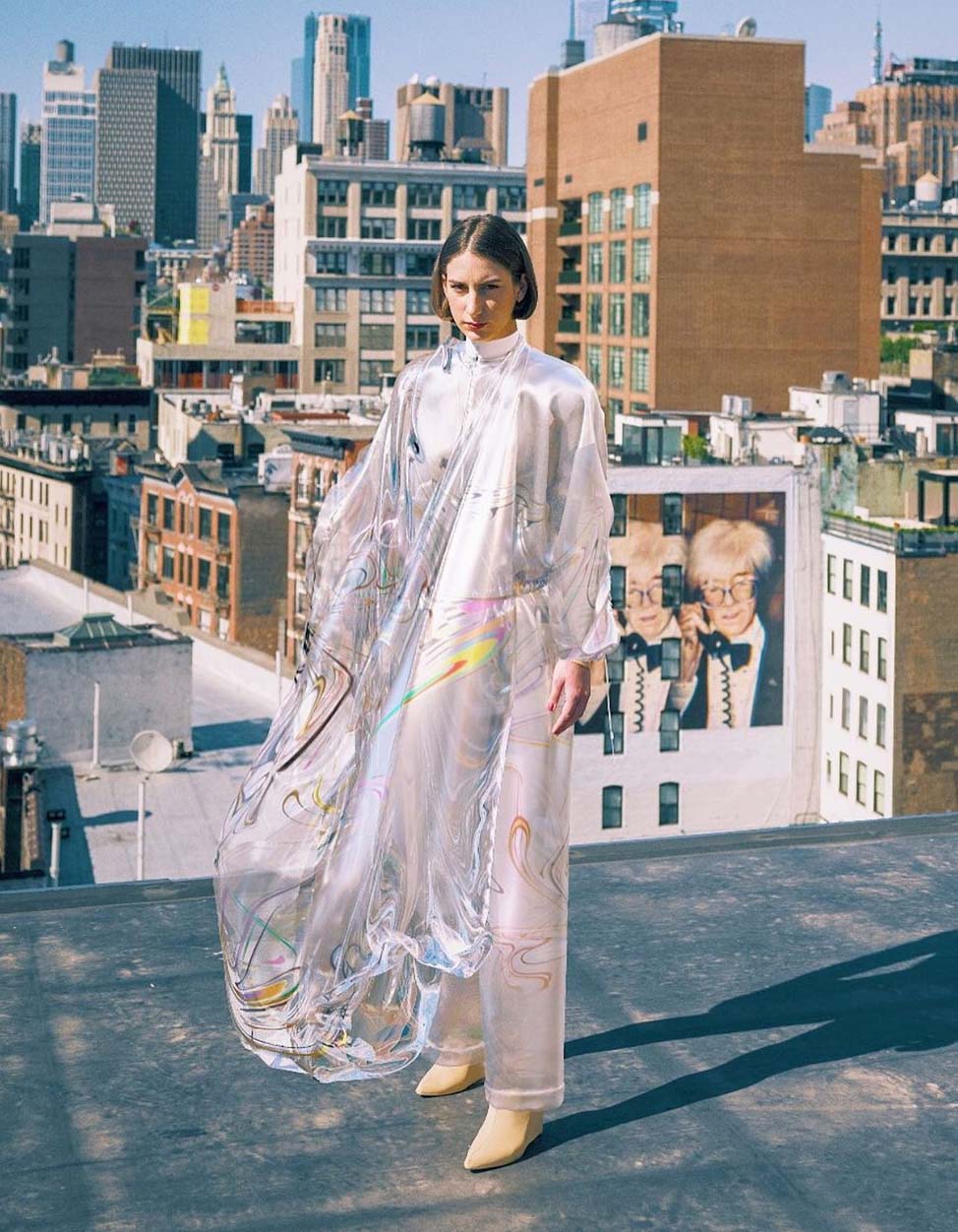
This dichotomy of balancing visionary escapism with a discerning scepticism of industry is symptomatic of the times. When fashion monoliths like Nike are staying ahead of the curve and using 3D-design software in their ACG campaigns, it’s easy to revert to a sneering scepticism for the very mechanisms that are producing these exciting visions of the future. But ultimately, fusing futurism with fashion is a way of showing just how capable we are of pushing the limits of our ingenuity through design and art. Habib Osaye of Roosevelt echoes this sentiment of liberating our artistic freedoms when it comes to imagining our prospective lives. “It’s like this playground where you can represent anything… I feel it’s more of an escape,” he said. “We’re all curious of the future, space, alien life and the unknown. There are many predictions of how it will all end – so why can’t we have our own story or visual representation?”
Our current technologies are allowing for wilder reimaginings of the future
Whether it’s through digital clothing or sending hairy monsters down the runways, merging aesthetics and temporalities widens the possibilities for freedom of expression. Even for Tripoteau, if we remove the sociopolitical from his reasoning, we find that his intrigue with exploring future-fashion is built on imagination and story-telling. We explore these themes in art and fashion because, in his words, it’s “something bigger, different. Something we can’t see or reach yet. It allows us to build stories and let our imagination run free to create. It’s definitely stimulating.”
From the clean, sculptural silhouettes of Pierre Cardin, to Marine Serre’s functional, sports-inspired survival-wear, fashion has always had a fixation with the future. For many, future-fashion is getting more politicised, with sustainability and DIY-processes becoming key to clothing collections. Instead of trying to win a losing battle against ingrained capitalist consumption, designers are now changing how and what it is we are consuming. For others, total digitisation is the answer: it’s a democratising process which pushes boundaries in innovation, and has zero impact on the environment.
Our current technologies are allowing for wilder reimaginings of the future, and the playground for experimenting with prospective realities is only going to get bigger. Ultimately, the enticing pull of the future comes from how relevant it is to the past and present. It’s both scary and exciting to know that the choices we have made and are currently making, will continue to affect how we look, dress and feel as a society in coming years.
Read more: The Rise Of Esoteric Symbolism in Fashion



